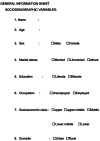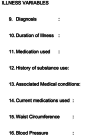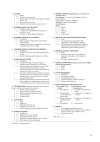Uric Acid as a Biomarker for Mood Disorders: A Comparative Study of Blood Uric Acid Levels Correlating With the Symptom Severity and Treatment Response
- PMID: 39268307
- PMCID: PMC11392049
- DOI: 10.7759/cureus.66784
Uric Acid as a Biomarker for Mood Disorders: A Comparative Study of Blood Uric Acid Levels Correlating With the Symptom Severity and Treatment Response
Abstract
Background Bipolar affective disorder (BPAD) and major depressive disorder (MDD) are two mood disorders whose pathophysiology may involve the purinergic system. Elevated uric acid levels, associated with this system, can impact various behaviors in individuals affected by these conditions. In addition to genetic predisposition, blood uric acid levels can be impacted by various factors, including metabolic syndrome, the consumption of psychoactive medications, and other underlying kidney conditions such as gout. Objective The study aims to investigate the relationship between blood uric acid levels and mental health conditions, specifically BPAD subtypes (manic and depressive) and MDD. The study also examines changes in blood uric acid levels following treatment and evaluates the effectiveness of different treatment approaches in reducing uric acid levels. Methodology To be eligible to participate, individuals must have a confirmed diagnosis of BPAD (manic or depressive type) or MDD, according to the International Classification of Diseases (ICD-10). Blood uric acid levels were measured at both baseline and follow-up assessments. Symptoms were assessed weekly using standardized rating scales (Young Mania Rating Scale (YMRS) and Hamilton Rating Scale for Depression (HAM-D)) until treatment response was achieved, which was defined as a 50% reduction in initial scores on both scales. We used ANOVA to examine the differences among the three patient groups and paired sample t-tests to examine the changes in means before and after treatment conditions. Results A significant positive correlation was found between the severity of illness and serum uric acid levels across all three patient groups: those with BPAD-mania, BPAD-depression, and MDD. Notably, patients with BPAD-mania patients had significantly higher serum uric acid levels (5.2±0.9 mg/dL) compared to those with BPAD-depression (4.8±1.0 mg/dL) and MDD (4.0±1.1 mg/dL). After treatment, all patient groups exhibited a decrease in serum uric acid levels. The reduction in serum uric acid levels was pronounced in all patient groups, with decreases of 3.1±0.8 mg/dL in patients with BPAD-mania, 3.1±0.9 mg/dL in those with BPAD-depression, and 3.5±1.1 mg/dL in those with MDD. The study showed that the reduction in serum uric acid levels was significantly correlated with the severity of illness in patients with BPAD-mania, but not in those with BPAD-depression or MDD. Furthermore, the study found that treatment with lithium carbonate, sodium valproate, or carbamazepine was equally effective in reducing serum uric acid levels, regardless of the mood stabilizer used. Conclusion The study supports that dysfunction in the purine system might play a significant role in the development and progression of BPAD, suggesting that this phenomenon is not solely due to chronicity or medication exposure. This study also introduces a fresh perspective on the underlying biological processes that contribute to the development of BPAD and also sheds light on new treatment regimens targeting uric acid reduction in treating patients with bipolar disorder.
Keywords: bpad; mania; mdd; mood disorders; symptom severity; treatment response; uric acid levels.
Copyright © 2024, Immanuel et al.
Conflict of interest statement
Human subjects: Consent was obtained or waived by all participants in this study. Institutional Ethics Committee, Andhra Medical College, Visakhapatnam, India issued approval 12/IEC AMC/FEB/2020. Animal subjects: All authors have confirmed that this study did not involve animal subjects or tissue. Conflicts of interest: In compliance with the ICMJE uniform disclosure form, all authors declare the following: Payment/services info: All authors have declared that no financial support was received from any organization for the submitted work. Financial relationships: All authors have declared that they have no financial relationships at present or within the previous three years with any organizations that might have an interest in the submitted work. Other relationships: All authors have declared that there are no other relationships or activities that could appear to have influenced the submitted work.
Figures










References
-
- Comorbidities and mortality in bipolar disorder: a Swedish national cohort study. Crump C, Sundquist K, Winkleby MA, Sundquist J. JAMA Psychiatry. 2013;70:931–939. - PubMed
-
- Purinergic system in the treatment of bipolar disorder: uric acid levels as a screening test in mania. Machado-Vieira R. J Clin Psychopharmacol. 2012;32:735–736. - PubMed
-
- Purinergic system dysfunctions in subjects with bipolar disorder: a comparative cross-sectional study. Bartoli F, Crocamo C, Dakanalis A, et al. Compr Psychiatry. 2017;73:1–6. - PubMed
LinkOut - more resources
Full Text Sources
